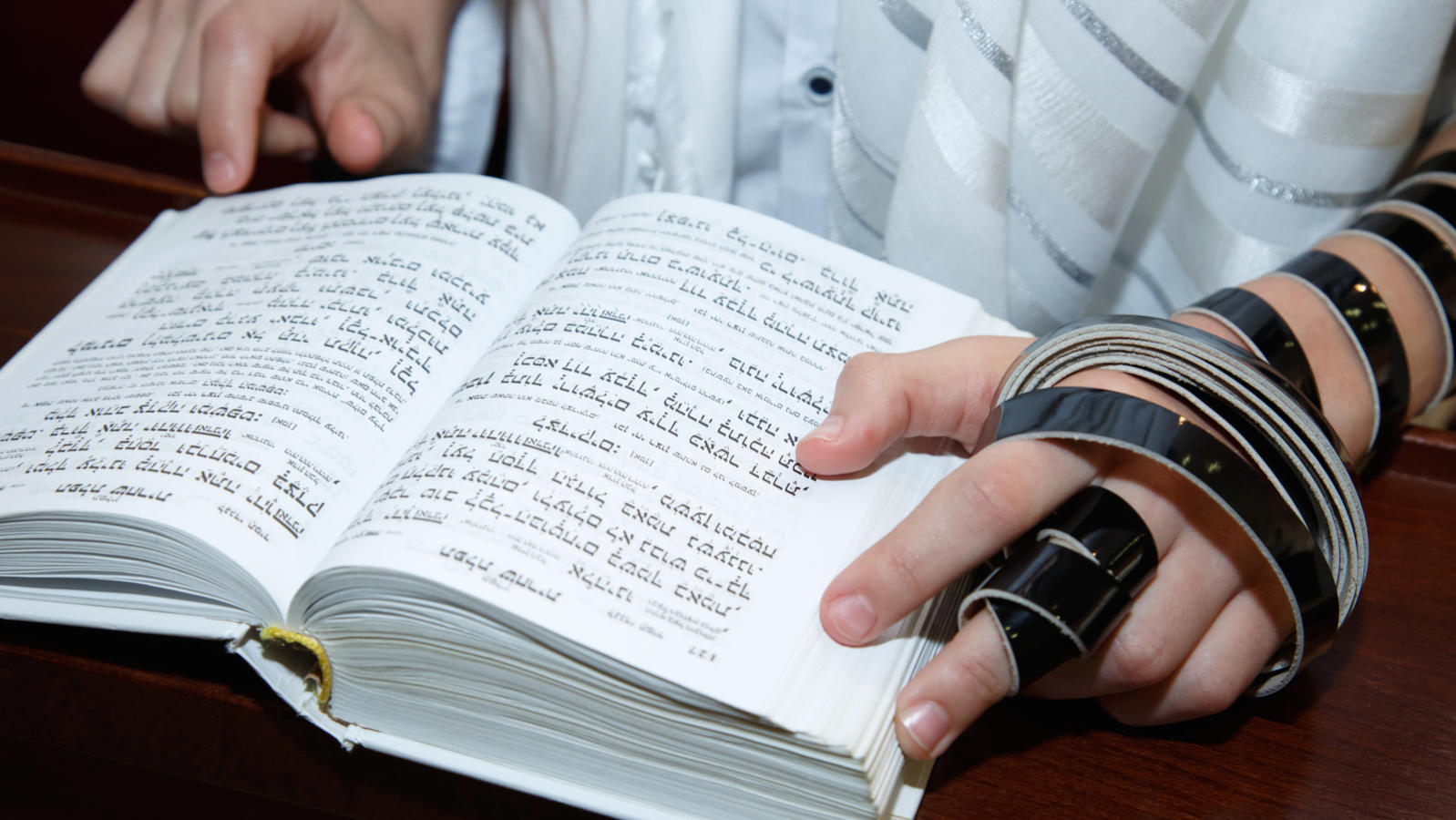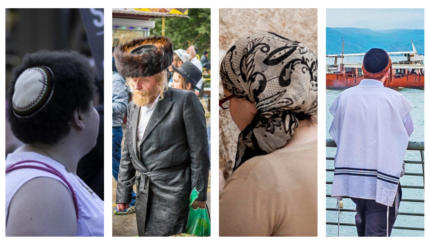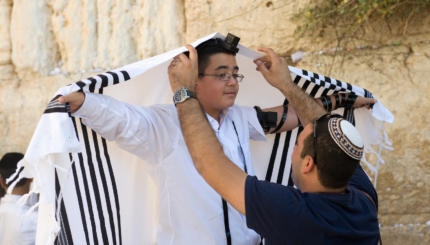Tefillin are worn during morning services except on Shabbat or festivals.
Most men wear tefillin in Orthodox and Conservative congregations, as do some women in Conservative congregations. The use of tefillin is less prominent in Reform and Reconstructionist congregations by both men and women. Inside the tefillin are handwritten parchments with texts from the four passages mentioned above.
The tefillin consist of two black leather boxes and straps to hold them on. One is worn on the biceps, and its strap, which is tied with a special knot, is wound by the wearer seven times around the forearm and hand—on the left arm for right-handed people and on the right for those who are left-handed. The second box is worn on the forehead at the hairline, with its straps going around the back of the head, connected at the top of the neck with a special knot, and hanging in front on each side.
Four passages in the Torah call upon the Israelites to keep God’s words in mind by “bind[ing] them as a sign upon [their] hands and making them totafot [an enigmatic term] between [their] eyes.” Tefillin, as ordained by the rabbinic leaders of classical Judaism, are intended to fulfill that commandment.

Help us keep Jewish knowledge accessible to millions of people around the world.
Your donation to My Jewish Learning fuels endless journeys of Jewish discovery. With your help, My Jewish Learning can continue to provide nonstop opportunities for learning, connection and growth.
Tefillin can be purchased at Judaica stores or on Amazon.com.
How To Put on Tefillin
The video below walks you through the process. For a text version, with photographs, click here.
tefillin
Pronounced: tuh-FILL-in (short i in both fill and in), Origin: Hebrew, phylacteries. These are the small boxes containing the words of the Shema that are traditionally wrapped around one’s head and arm during morning prayers.
Torah
Pronunced: TORE-uh, Origin: Hebrew, the Five Books of Moses.



